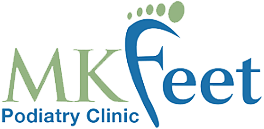About Children’s Feet Treatments
Children can also develop conditions and deformities of the lower limb. Some of these conditions may be a normal part of development however others; if left untreated, may develop into more serious problems.
For some conditions early intervention is key. A full biomechanical assessment including the patient’s musculoskeletal development, relative to age is usually conducted to conclude an accurate treatment plan.
- Growing pains
- Flatfeet
- In-toeing/ out-toeing
- Toe-walking
- Hypermobility
- And many more
Diagnosing Foot Problems
Similarly to when treating foot problems amongst adults, there are several key tell-tale signs that a child would benefit from visiting a podiatrist. Pain, of course, is the most prominent symptom, particularly in the lower legs, knees and base of the foot. Pain often occurs a few hours during the night and will cause the child to become incredibly distressed. On the other hand, there are a number of visible signs that, while they will not cause discomfort, may limit the development of the child. Visible signs include bow legs, knock knees, in-toeing, out-toeing, flat feet and tiptoe walking; all of which are likely to be prominent at a young age however should correct themselves. If they are unable to be resolved with age, a podiatrist will need to get involved.
Treatments
With years of experience working in the field of podiatry, our specialists have a broad knowledge of the array of possible causes of pain and discomfort of the lower limbs. The following steps will be completed to treat infants and children:
Full Assessment
A full assessment of the cause of the problem or pain.
Correction Plan
A plan will then be made to correct any abnormalities.
Referral If Required
If required, a referral will be made to a paediatrician or specialist.

